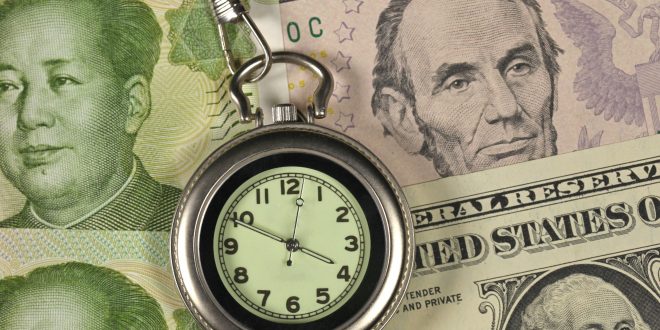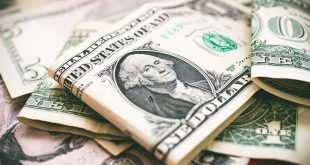Wall Street finished lower on Friday, capping off a turbulent week marked by an evolving banking crisis and the gathering storm clouds of a possible recession.
All three indexes finished the session in the red, with financial stocks falling the most of the S&P 500’s major sectors.
All three indexes ended the session deep in negative territory, with financial stocks down the most among the major sectors of the S&P 500.
For the week, while the benchmark S&P 500 ended higher than last Friday’s close, the Nasdaq and the Dow posted weekly declines.
SVB Financial Group announced it would file for Chapter 11 bankruptcy protection, the latest twist in a saga that began last week with the failures of Silicon Valley Bank and Signature Bank, which sparked fears of a global banking system crisis.
The S&P Banking index and the KBW Regional Banking index both fell 4.6% and 5.4% in the last two weeks, respectively, their largest two-week drops since March 2020.
First Republic Bank fell 32.8% after the bank announced it would suspend its dividend, reversing Thursday’s surge fueled by an unprecedented $30 billion bailout package from large financial institutions.
Credit Suisse’s US-traded shares closed 6.9% lower as well.
Investors’ attention is now focused on the Federal Reserve’s two-day monetary policy meeting next week.
Investors have adjusted their expectations regarding the size and duration of the Fed’s restrictive interest rate hikes in light of recent developments in the banking sector and data indicating a softening economy.
According to CME’s FedWatch tool, financial markets have priced in a 60.5% chance that the central bank will raise its key target rate by 25 basis points, and a 39.5% chance that it will leave the current rate alone.
The Dow Jones Industrial Average dropped 384.57 points, or 1.19%, to 31,861.98, the S&P 500 dropped 43.64 points, or 1.10%, to 3,916.64, and the Nasdaq Composite fell 86.76 points, or 0.74%, to 11,630.51.
Data
The US Bureau of Labor Statistics reported on Tuesday that annual inflation in the US, as measured by the Consumer Price Index (CPI), fell to 6% in February from 6.4% in January. This reading was consistent with market expectations. The CPI rose 0.4% month on month. The Core CPI, which excludes volatile food and energy prices, rose 0.5% on a monthly basis, compared to 0.4% expected by the market, bringing the annual rate down to 5.5% from 5.6%.
The US Census Bureau reported on Wednesday that retail sales in the United States fell 0.4% month on month in February to $697.9 billion. This reading followed January’s 3.2% increase and was slightly worse than the market’s expectation of a 0.3% decrease.
The Producer Price Index (PPI) for final demand in the United States fell to 4.6% year on year in February, from 5.7% in January. According to data released on Wednesday by the US Bureau of Labor Statistics. This figure was significantly lower than the market expectation of 5.4%. The annual Core PPI fell to 4.4% from 5.4% in the same period, compared to analysts’ expectations of 5.2%. The Core PPI was 0% on a monthly basis.
The US Department of Labor (DOL) reported 192,000 initial jobless claims in the week ending March 11, according to weekly data released on Thursday. This print followed the previous week’s print of 212,000 and outperformed the market forecast of 205,000. According to the publication, the advance seasonally adjusted insured unemployment rate was 1.2%, and the 4-week moving average was 196,500, a 750 decrease from the previous week’s revised average.
The US Census Bureau released monthly data on Thursday, revealing that Housing Starts increased by 9.8% on a monthly basis in February, following a 2% decline in January. This reading was much better than the market’s expectation of a 0.6% drop. Building Permits increased by 13.8% during the same period, compared to the market’s expectation of a 0.5% decline.
The US Federal Reserve reported on Friday that industrial production in the US was unchanged in February, following a 0.3% (revised from 0%) increase in January. This reading came in lower than the market’s expectation of a 0.2% increase. The Fed noted that manufacturing output increased 0.1% during the same period and that capacity utilisation remained stable at 78.0%.
In early March, consumer sentiment in the United States weakened, with the University of Michigan’s (UoM) Consumer Confidence Index falling to 63.4 from 67 in February. This reading was lower than the market forecast of 67.
US Dollar and Currncies
The dollar fell on Friday as further declines in the shares of Credit Suisse and First Republic Bank shook markets, raising fears of contagion and raising concerns about the impact of tighter monetary policy on the economy.
An early rally in European stocks faded away as investor sentiment stayed shaky following a week of turmoil following the failure of Silicon Valley Bank on March 10.
U.S. banks have sought a record $153 billion in emergency liquidity from the Federal Reserve in recent days, while the $54 billion loan for Credit Suisse and $30 billion lifeline for First Republic failed to halt their stock declines. Credit Suisse fell 8% in Europe and First Republic tumbled 30%.
The dollar index, which measures the value of the dollar against six other currencies, fell 0.604% as traders awaited the Fed’s two-day policy meeting, which is expected to end with a quarter-point increase in interest rates on March 22.
According to CME’s FedWatch Tool, contracts for fed funds futures show a 61.3% chance that the Fed will raise rates by 25 basis points. The Fed is also expected to cut rates by July, indicating that recession fears are growing as the US central bank tightens monetary policy to combat high inflation.
The euro increased by 0.66% to $1.0675.
The rescue of First Republic on Thursday initially increased risk appetite on Friday, as concerns about global banks eased, allowing the Australian and New Zealand dollars to surge.
The pound was last trading at $1.2192, up 0.70%, while the dollar was down 0.39% against the Swiss franc. The franc fell the most against the dollar in a single day since 2015, when the Swiss central bank relaxed its currency peg.
The Japanese yen, which tends to benefit during periods of extreme market volatility or stress, rose 1.48% against the US dollar to 131.77 per dollar.
The Australian dollar, which often outperforms when investors are feeling optimistic, rose 0.81% to $0.671.
Europe
The European Central Bank (ECB) raised its key interest rates by 50 basis points (bps) following its March policy meeting, as expected.
The interest rate on the main refinancing operations, as well as the interest rates on the marginal lending facility and the deposit facility, will be raised to 3.5%, 3.75%, and 3%, respectively, as a result of this decision.
European stocks gave up early gains on Friday and posted their biggest weekly decline in five months after supportive measures by regulators in the United States and Europe failed to quell fears of a global banking crisis.
The Stoxx 600 index closed down 1.3 percent, affected by the decline in the sub-indices of the banking, insurance and financial services sectors.
The banking sector index lost 2.6 percent, with HSBC, BNP Paribas, Allianz and UBS Group falling between 1 and 3 percent.
The STOXX 600 index has lost nearly 4 percent this week, with banking stocks down 11.5 percent after the collapse of US and European banks left investors worried about the health of the financial sector.
Gold
On Friday, gold reached 11-month highs, breaking free from the clutches of mid-$1,900 pricing to head for bullion bulls’ long-term target of $2,000, as the US banking crisis pushed more investors to safe havens.
The front-month April gold futures contract on New York’s Comex settled at $1,973.50 an ounce, up $50.50, or 2.6%. The session high was $1,980.50, a peak since the $1,985.10 registered on April 19, 2022. For the week, April gold was up by a whopping $106.30, or 5.7%.
The spot price of gold, more closely followed than futures by some traders, was at $1,973.92 by 17:55 GMT on Friday, up $54.37, or 2.8%. The session high for spot gold was $1,975.24, also marking an 11-month high.
Spot gold’s charts indicated that a test of $2,000 was possible, so long as the current momentum held, said chartist Sunil Kumar Dixit.
According to Investing.com data, the last time spot gold reached $2,000 was in March 2022, when it hit $2,070.29, nearly matching the record high of $2,072.90 set in August 2020.
Gold prices have risen sharply since the The Us’ banking crisis erupted a week ago, when the Federal Deposit Insurance Corp. took over two mid-sized lenders, Silicon Valley Bank and Signature Bank, after depositors withdrew billions of dollars from them, fearing for their solvency. Over the last 24 hours, Silicon Valley has declared bankruptcy. Despite receiving a $30 billion cash infusion from a bank consortium, a third bank, First Republic, is also in trouble.
Oil
Oil ended trading lower on Friday, giving up early gains that exceeded the dollar per barrel, as concerns about the banking sector pushed the two benchmarks to post their biggest weekly losses in months.
Brent crude futures fell $1.73, or 2.3%, to $72.97 a barrel at settlement, while US West Texas Intermediate crude lost $1.61, or 2.4%, to $66.74.
Both benchmarks fell more than $3, hitting their lowest levels during the session. Brent lost about 12 percent for the week, its biggest weekly loss since December. West Texas Intermediate crude futures have fallen 13 percent since last Friday’s close, marking their biggest weekly loss since last April.
 Noor Trends News, Technical Analysis, Educational Tools and Recommendations
Noor Trends News, Technical Analysis, Educational Tools and Recommendations





